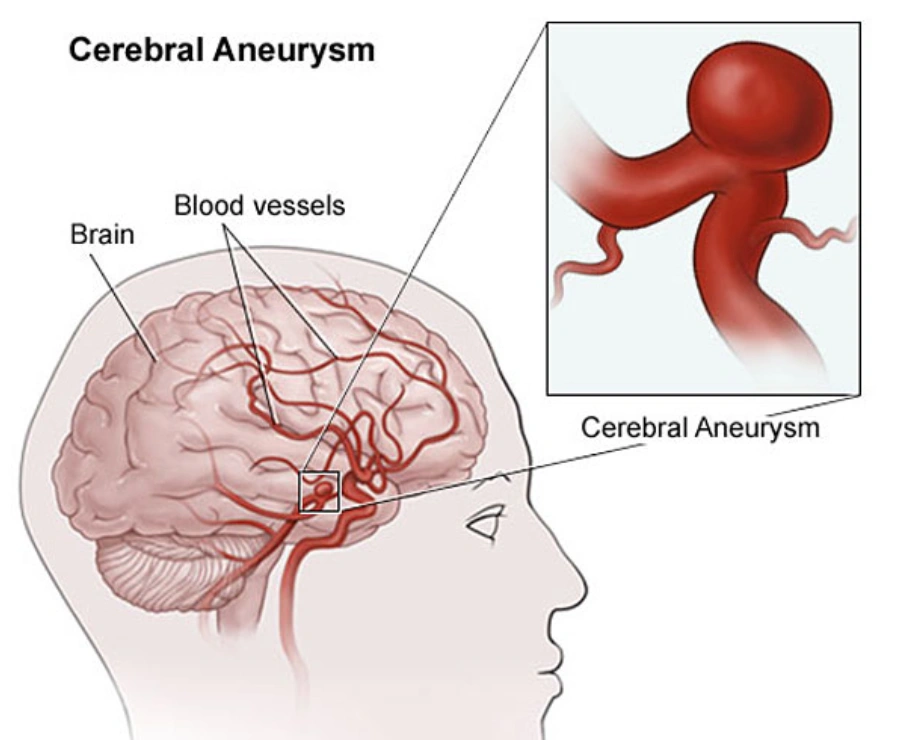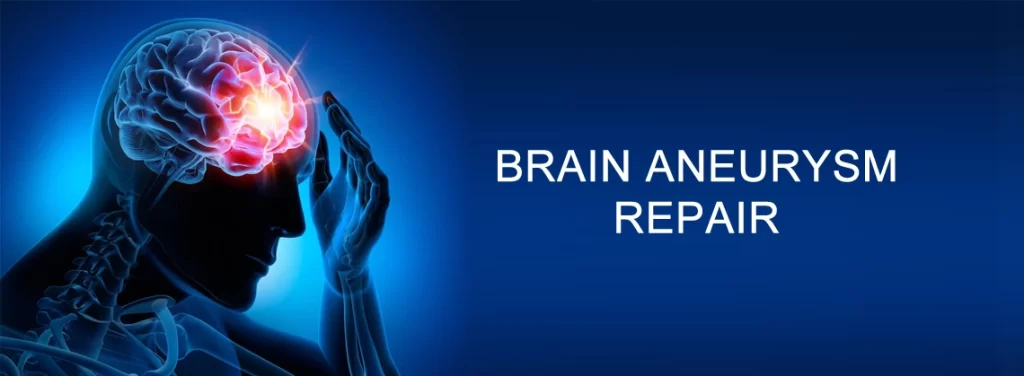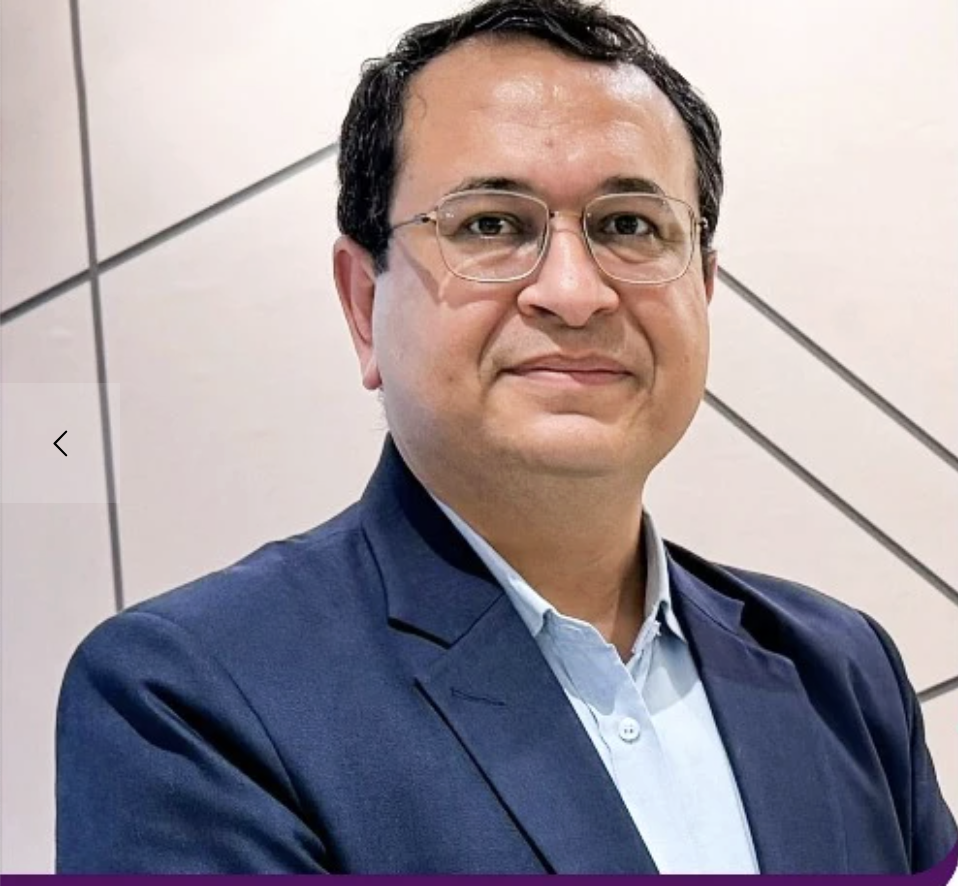Brain Aneurysm Repair in Gurgaon, Delhi NCR, India
All About Brain Aneurysm Repair
Brain Aneurysm is the brain condition where the weak spot in arterial walls of brain bulge or fill with blood. It is also medically termed as cerebral aneurysm or intracranial aneurysm. The condition is life threatening which may affect people of any age and when Brain Aneurysm burst or rapture it is considered as emergency situation that may lead to brain damage, stroke or even death. But not all Brain Aneurysm rapture as only 40% of patients is at higher risk of Brain Aneurysm burst and it is considered fatal.
What are the Symptoms of Brain Aneurysm?
The most common symptoms of Brain Aneurysm include:
- Retro orbital pain
- Impaired vision with double or blurring vision
- Headache getting worse with time
- Slow onset of numbness in any body part
When the condition worsens or the Brain Aneurysm is ruptured patients may experience following symptoms.
- Loss of consciousness
- Sudden onset of weakness and numbness in body parts
- Onset of headache that gets worsen
- Development of seizures
- Blurring or loss of vision completely with pain in eyes

Risk Associated with Brain Aneurysm
Patients with Brain Aneurysm are at higher risk of developing the following conditions.
- Cerebral ArterioVenous Malformation is the abnormal connection that develops between the veins and arteries in brain and this causes abnormal blood flow in brain vessels. This condition is treated with AV Malformations Embolization.
- Polycystic Kidney Disease is the condition where several cysts are formed in kidney and causes increased pressure of blood
- Connective tissue disorder is the condition that weakens the walls of blood vessels and these acts as the breeding ground for Aneurysm
- Dural AV Fistula is the abnormal connections between vein and artery in tough covering over brain
- Patients may also develop AVM or Spinal Cord AV Malformations which is the abnormal tangle of blood vessels on or near the spinal cord and leaving it untreated can lead to permanent damage of spinal cord.
What are the Methods for Repairing of Brain Aneurysm?
Well, medical science has been progressing and many methods were launched to repair the Brain Aneurysm. But the treatment option is chosen by the doctor based on the type and location of Aneurysmm and patient’s factors like general health, age, and medical history. Some of the common methods to treat the condition include;
- Surgical Clipping -This is the medical procedure where incision is made in scalp of the patients and a part of skull is removed to access the Brain Aneurysm and then the surgeon place a metal clip on neck of Brain Aneurysm, while cutting off the supply of blood to the Aneurysm. Based on the location of the Brain Aneurysm, the name of the produce may be different such as ACOM Repair, MCA Aneurysm, PICA Aneurysm, ICA Aneurysm, AICA Aneurysm and DACA Aneurysm. This is the procedure which is always considered to be the best repairing process compared to Coiling, both in terms of affordability and recovery.
- Endovascular Coiling – This is the procedure where a catheter is inserted through the artery to access Brain Aneurysm and then supply of blood is blocked which finally closes off the Aneurysm. This is one of the best Coiling procedures for Brain Aneurysm.
- Flow Diverters – As medical science has made many progression, there are also procedures with less risk and it is called Flow Diverters. It is the tubular stent which is an implant that diverts the blood supply from Brain Aneurysm Sac and promotes healing of the region and finally reconstructs it. This is best suited for larger Brain Aneurysm which can’t be treated with other methods.
- Stent Assisted Coiling – Stent Assisted Coiling is the procedure that uses two Y- Stenting implants. This procedure has 92% success rate and it is very rarely performed.
All these treatment procedures are performed when the Brain Aneurysm is ruptured or the patient is at higher risk of rupturing their Brain Aneurysm. In non-ruptured cases also these methods are used but it depends on specific factors.
What are the Risk Factors of Brain Aneurysm Repair?
- Brain Aneurysm Repair is basically a serious surgical procedure and hence it carries a variety of health risk like other medical surgeries. This includes:
- Neurological deficits because of brain tissue damaging during the procedure like visual impairments, behavioural abnormalities, speech impairments, weakness in specific area of body.
- Edema or swelling of brain
- Formation of blood clots leading to stroke
- Infection in surgical site
- Development of seizures
Some of the patients may also be at risk of anaesthesia during the procedure and may develop allergic reaction to the aesthetic agents because the repairing of Brain Aneurysm is done under general anaesthesia.

How to Prepare for Brain Aneurysm Repairing?
There is no preparation required for the patients with ruptured Brain Aneurysm as this is the emergency case and there is less time for preparation for the surgical procedure. But patients with non-ruptured Brain Aneurysm need to prepare well before the repairing procedure and they need to prepare for the procedure in the following ways.
- Firstly need to quit smoking and drinking alcohol
- Discuss with doctor about the drugs and also explain your pre-existing conditions like diabetes or hypertension.
- Instructions by doctors like fasting for at least 8 hours before surgery, taking the pre- surgical drugs, undergoing investigations and tests to assess the fitness level of the procedure and avoiding drugs that are not prescribed before the procedure.
What to Expect Post Brain Aneurysm Repair?
After the surgical procedure is complete, patients are asked to stay back at hospital for at least 2-7 days and the patients will be under continuous observation. The Endovascular coiling has the benefit of faster recovery. After the procedure the patient is transferred to ICU for close monitoring. It usually takes 4-6 weeks to fully recover and resume with the normal activities. But patients are asked not to perform any rigorous activities for at least 90 days after the surgical procedure and repairing.
